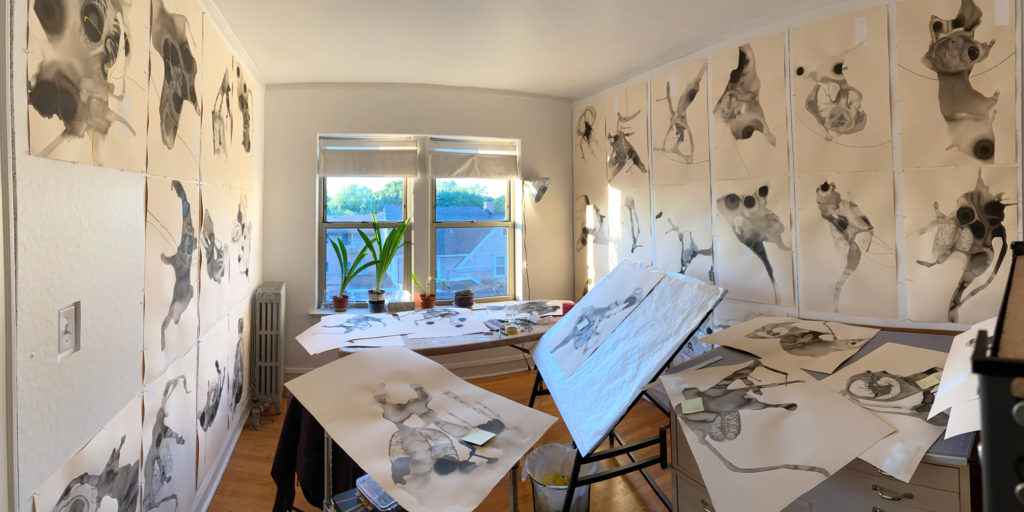
By late 2019, I had spent almost two years looking at a social networking app intended for healthcare professionals. In many ways the app reminded me of Instagram—it featured posts from all over the world followed by comments and “likes,” except the posts were exclusively medical in nature. I made drawings based on the cultural aspects of each case study, e.g., what I saw in the image, the captions that followed, how commenters reacted, what they thought was going on, and how they communicated with each other regarding the patient in question.
In January/February 2020, I noticed something unusual on the app: almost every new post involved an X-ray or MRI of lungs. The comments were panicked, confused, bewildered. Doctors and nurses discussed how quickly and suddenly patients were declining; their vitals were normal only minutes prior. Life around me in Chicago was unexceptional at the time, but the virus was in the news. One day on the app, beneath one of countless images of lungs that looked eaten away and hollow, a nurse posted the following comment in all caps:
“GOD HELP US ALL!”
My partner and I were planning on throwing a big housewarming party on March 21, 2020, which we decided to cancel despite things still being uncertain. The very day before our party was supposed to take place, the governor of Illinois held a press conference in which he issued a stay-at-home order to commence the next day.
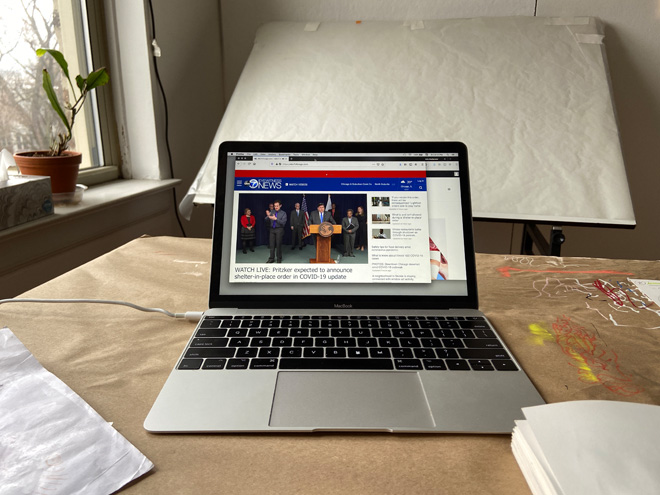
I watched the news in disbelief and even took a picture of my laptop. When I looked out of the window, the trees and houses all looked the same but the world felt different, remote. Up until this point, I was having a slow week in the studio. A sudden urge to record and archive the moment compelled me to remove everything from the walls and begin planning new work.
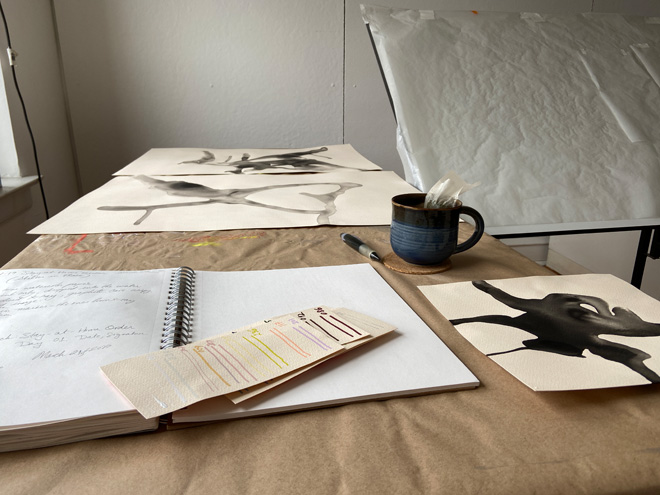
Digging through my cabinet drawers, I found a large stack of toned watercolor paper and a bottle of black ink left over from past projects. This new venture called for simple materials—partly because I didn’t know what I would have access to during the lockdown, and partly because of the somber mood of the occasion. As with past work, spilled ink on paper was going to serve as a foundation for drawing. I covered approximately half a dozen sheets in diluted black ink and allowed them to dry overnight.
The next day (the first day of the stay-at-home order), I logged into the medical app and selected an image. My first drawing was life-size, in simple graphite. Each day I found an image of lungs on the app, and each day I made a new drawing. This went on for 74 days—the full duration of the lockdown in Chicago.
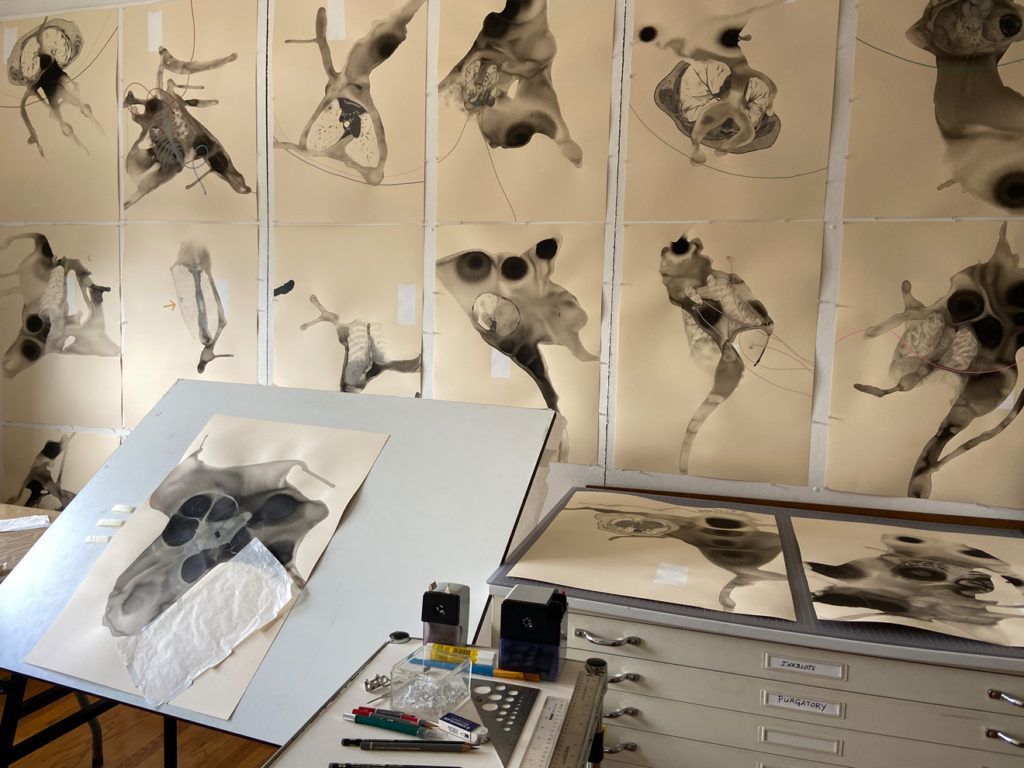
Aside from the depiction of lungs, the drawings had two additional elements. One was an illustration of artifacts from the X-rays and MRI scans that I added in acrylic pen. (Many of these artifacts were digital anomalies such as cursors and unit measurement scales, but some were simply folds in the hospital gown or jewelry that the patient wore during their scan.) The second element was a silhouette of my glowing phone screen painted life-size in white gouache, counting the days in confinement by moving over a few inches each day.
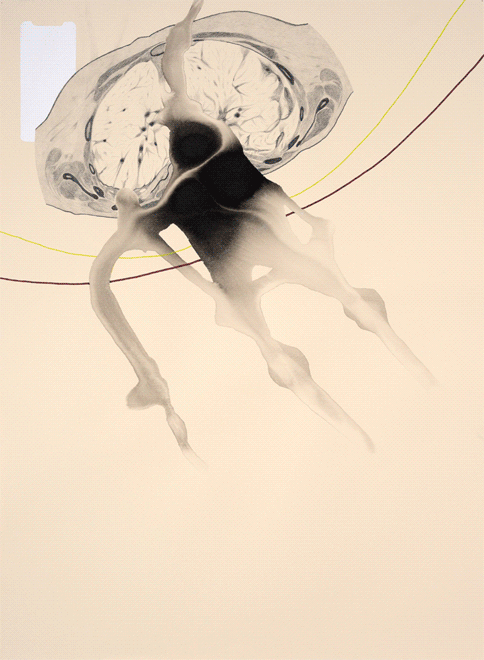
The irony of this work is that it is impossible to see online, yet the online translation exhibits qualities that cannot be reproduced in person, especially when animated in sequence. In some of the drawings, the mouse cursor might be confused with a cursor on a screen, yet in person it is clearly illustrated in pen and ink and cannot be mistaken for anything real… and by real I mean digital.
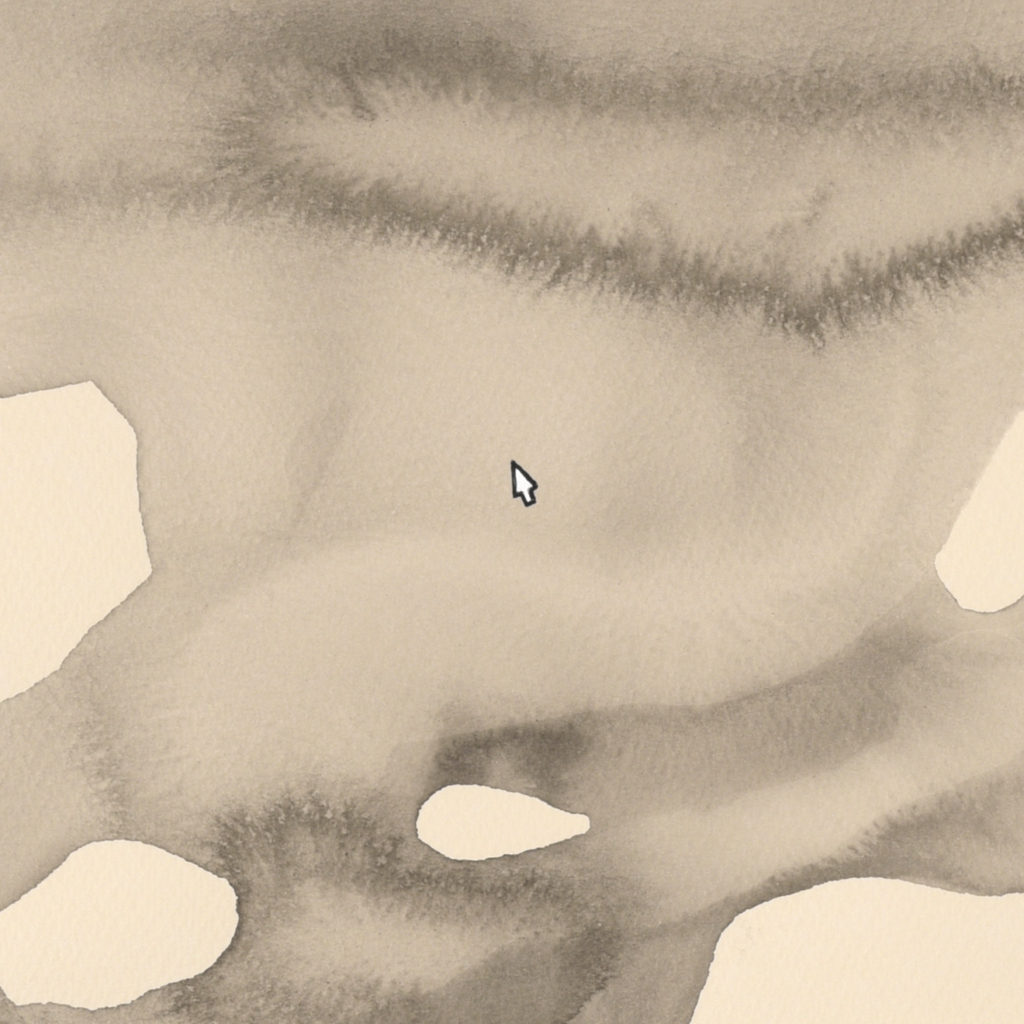
Moreover, the drawings are 30”x22”, a scale that is lost on most computer screens. The scale correlates directly to a human torso and captures the awareness of one’s own lungs in relationship to the paper. During a time when so many human experiences across the world are mediated digitally, I wanted to turn to something textured and physical that relates to the viewer’s body, as I have done with so much of my past work.
I also realize that exhibiting work about a pandemic during a pandemic might not be sensible for a number of reasons… This series turns out to be a strangely paradoxical archive of several layers of participation: the idiosyncrasies of each patient and the virus that they have in common, the different manifestations of illness, the strained hospitals, the confinement of lockdown, the digital confusion and fatigue, and the desire to stay aligned with a body and a tactile surface.
I would like to stand in the room surrounded by all the drawings. The sobriety that I glimpse on the computer screen brings me calm. Seeing all the squares on the wall makes me think of a huge calendar. They evoke space, room, air, like being inside a lung.
Ultimately the pandemic just reinforced that we all are isolated at times, but we can all still connect as long as we put in the effort and care about one another.
Stunning works, Vesna! You’ve been busy. It’s helpful to realize the scale of these WoPs. I perceived them as small until I saw the installation shots – I can imagine a feeling of dis-ease standing amongst them.